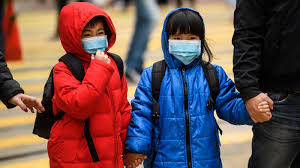Melbourne: Children have fewer symptoms and less severe disease from infection with the novel coronavirus, according to a review of studies which suggests that kids infected by a household contact often show symptoms before them.
The review, published in the Pediatric Infectious Disease Journal, noted that the novel coronavirus, SARS-CoV-2, seems to cause fewer symptoms and less severe disease in children compared with adults.
According to the researchers, including Petra Zimmerman from the University of Fribourg in Switzerland and Nigel Curtis from the University of Melbourne in Australia, children are just as likely as adults to become infected with the virus, but are less likely to be unwell or develop severe symptoms.
“However, the importance of children in transmitting the virus remains uncertain,” the scientists cautioned in the study.
“Coronaviruses are a large family of viruses that can cause infection and disease in animals, capable of rapid mutation and recombination, leading to novel viruses that can spread from animals to humans,” they said.
According to the study, there are four coronaviruses that circulate in humans, mostly causing respiratory and gastrointestinal symptoms — ranging from the common cold to severe disease.
Over the past two decades, the scientists said there have been three major disease outbreaks due to novel coronaviruses — SARS-CoV in 2002, MERS-CoV in 2012, and now SARS-CoV-2 in 2019.
“The term COVID-19 is used for the clinical disease caused by SARS-CoV-2,” the researchers explained.
While transmission of SARS-CoV-2 appears similar to that of the related SARS and MERS coronaviruses, the new virus has a lower fatality rate, they said.
While it can still cause serious and life-threatening infections — particularly in older people and those with pre-existing health conditions, the scientists said, children appear to have milder clinical symptoms than adults, and tend to be at substantially lower risk of severe disease. They said this was also true in the SARS and MERS epidemics.
Based on data from China since February 2020, the study noted that children and adolescents accounted for only two percent of SARS-CoV-2 hospitalisations.
However, they said children are less frequently symptomatic, and have less severe symptoms they are less often tested, leading to an underestimate of the true numbers infected.
The researchers added that children are also less frequently exposed to the main sources of transmission. “Most infected children recover one to two weeks after the onset of symptoms, and no deaths had been reported by February 2020,” the researchers wrote in the study.
The scientists said most reported infections with SARS-CoV-2 have occurred in children with a documented household contact, adding that kids with COVID-19 may be more likely to develop gastrointestinal symptoms.
In the review, the researchers also assessed the diagnostic findings of children with COVID-19.
They said whole genome sequencing approaches have enabled rapid development of molecular diagnostic tests for SARS-CoV-2, adding that treatment, for now, is supportive without any specific antiviral medications available.
For developing new drugs and vaccines against the deadly virus some approaches target a “spike glycoprotein” involved in interactions between coronaviruses and human cells, the study noted.
Until such treatment and preventive measures are available, the researchers said the need of the hour is a “highly effective global public health response” similar to the one that led to containment of the SARS epidemic.
PTI


